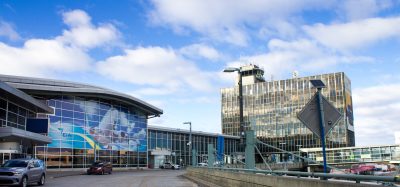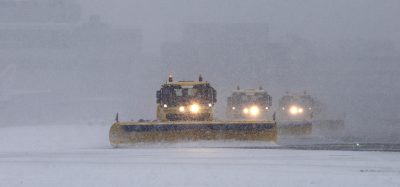Trondheim’s snow and ice tactics
- Like
- Digg
- Del
- Tumblr
- VKontakte
- Buffer
- Love This
- Odnoklassniki
- Meneame
- Blogger
- Amazon
- Yahoo Mail
- Gmail
- AOL
- Newsvine
- HackerNews
- Evernote
- MySpace
- Mail.ru
- Viadeo
- Line
- Comments
- Yummly
- SMS
- Viber
- Telegram
- Subscribe
- Skype
- Facebook Messenger
- Kakao
- LiveJournal
- Yammer
- Edgar
- Fintel
- Mix
- Instapaper
- Copy Link
Posted: 3 August 2012 | Per Jarle Ingstad, Operational Director, Trondheim Airport, Værnes, Avinor AS | 1 comment
Norway is well known for its wintery weather however these types of conditions are rarely a problem for us here at Trondheim Airport. It is a constantly changing and fluctuating winter pattern that creates the greatest challenges. This places greater demands on both personnel and equipment at the airport which can have an effect on flight movements.
We have a proactive approach to our winter operations. We work closely with the airlines and the handling companies to achieve the following priorities; safety, punctuality and the environmental effect. By targeting investment in proper equipment and training we have shown that it is possible to deal with the winter conditions effectively and efficiently.
Trondheim Airport
Trondheim Airport is Norway’s third busiest airport and the northern most international hub in the country and possibly in Europe. There are approximately 55,000 flight movements during the year. The airport is situated in the middle of Norway not too far from the Arctic Circle. This, combined with its location close to sea, creates an unpredictable weather pattern. Snow, rain, strong cross winds and a changing temperature creates a number of challenges for our personnel and, of course, pilots.
Norway is well known for its wintery weather however these types of conditions are rarely a problem for us here at Trondheim Airport. It is a constantly changing and fluctuating winter pattern that creates the greatest challenges. This places greater demands on both personnel and equipment at the airport which can have an effect on flight movements.
We have a proactive approach to our winter operations. We work closely with the airlines and the handling companies to achieve the following priorities; safety, punctuality and the environmental effect. By targeting investment in proper equipment and training we have shown that it is possible to deal with the winter conditions effectively and efficiently.
Trondheim Airport
Trondheim Airport is Norway’s third busiest airport and the northern most international hub in the country and possibly in Europe. There are approximately 55,000 flight movements during the year. The airport is situated in the middle of Norway not too far from the Arctic Circle. This, combined with its location close to sea, creates an unpredictable weather pattern. Snow, rain, strong cross winds and a changing temperature creates a number of challenges for our personnel and, of course, pilots.
This year (2012), we were still de-icing the runways and aircraft on 1 June, having experienced the first snowfall in the middle of October 2011, which highlights how prepared the airport must be for its winter operations during at least eight months of the year.
Despite the long winter and the many days of snow and constantly changing temperatures we, when possible, keep the runways closed for a minimum amount of time. From November 2011 to March 2012, which is the toughest winter period, we closed the runway just 23 times, with the longest period being 40 minutes.
Challenges
Our biggest challenge is not necessarily the amount of snow. It is a combination of the snow, rain and temperature fluctuations. Temperature and rainfall can vary greatly throughout the day and in some periods almost from hour to hour. We often have to deal with the challenges that freezing rain brings, too. However, while snow and freezing temperatures can be dealt with relatively easily, it is when the ground temp – eratures reach below zero and then combine with rain and wet snow, that we get slippery runways, aprons and taxi-ways.
It is when looking at the consumption of runway de-icing fluid over the previous winter seasons we get a good picture of how chall enging the varying wintery conditions were this season. Compared to the stable cold weather we had during the 2010-2011 winter, where we used 188,276 litres of Aviform and 11,500kg of granule, the statistics are quite striking; as we used 279,625 litres of Aviform and 13,000kg of granulate during this past season (2011-2012).
Organisation
Winter operations are integrated and organised as a part of the main airfield procedures and we have an experienced and dedicated crew. Trondheim Airport has a 24 hour emergency call team on standby during the winter season with the on-duty team leader/dispatcher constantly observing the weather radar, meteorological reports and ground temperature.
Years of experience has taught the crew that a good start at the right time is the key to success in achieving the best possible winter operations. We also have a very good working relationship with ground handling companies and all the airlines. This, combined with the work provided by our operation centre ensures that ground equipment is utilised to clean the apron and minimise delays. In addition to our permanent staff, we also take on seasonal employees from October to March who are trained in dealing with specific vehicles for specific areas on the runway.
Punctuality


The constantly changing temperatures create the biggest challenges at the airport
Trondheim Airport is amongst the best in Europe when it comes to punctuality. Given our geographical position and challenges with the winter seasons we feel that this is something of an achievement. This is a result of overall commitment from an experienced and dedicated crew and a good relationship with ground handling companies and airlines that ultimately contribute to the turnaround process. From a CDM (Collaborative Decision Making) perspective, which is and will be integrated within larger airports, it is imperative that we have good contingency plans and procedures to deal with winter challenges. Trondheim will eventually work closely with Oslo Airport to gradually implement the CDM programme.
Equipment
The equipment we use is very important to our winter operation procedures. Here at Trondheim we carry the following specialist vehicles and equipment:
- Five sweepers (plough with rotating brushes)
- Three snow-blowers
- Five big loaders and two small loaders
- Three trucks
- One chemical spreader
- One hot sand spreader
- Two friction tester cars.
For the next winter season we have ordered a new sweeper, snow blower and ice plough.
In the short term, we need to invest in such equipment as the airport expands with a new and larger apron and remote parking.
A full cleaning of the runway during ‘normal’ winter weather takes between 15 and 20 minutes. The row of vehicles involved with the ‘sweep’ consists of five sweepers with snow ploughs with rotating brushes, a large snow blower, a loader and a dispatcher car.


Clearing the runway at Trondheim
De-icing aircraft
Two handling agents execute the aircraft de-icing; SAS Ground Handling and Røros Handling. Because of climatic conditions, Trondheim is second only to Oslo Airport Gardermoen in its volume usage of de-icing fluids.
De-icing fluid is a very important product for the airport and a critical factor for a successful winter operation season. In the coming winter season (2012-2013) there will be even stricter requirements for the de-icing operators, to increase the focus on safety, punctuality and the environment. Increased collaboration between all parties at the airport will provide a greater efficiency which, in turn, will improve punctuality, as well as an increased focus on the environment. To meet this environmental commitment we will be upgrading our current de-icing platform this summer at a cost of approximately €1.7 million. Additionally, we will need to build a new de-icing platform over the next five years at a cost of approximately €6-7 million. Without this new platform, airlines will suffer significant delays, which will affect the airport’s performance.
Airport Carbon Accreditation
Avinor places considerable emphasis on its social responsibility. The external environment is integrated into its management system and Trondheim Airport is accredited as one of three airports in Norway within the industry scheme; Airport Carbon Accreditation which also affects our winter operations. Consumption by chemical liquids used on runway and aircraft de-icing are constantly monitored and measured. At the same time, we are always looking at ways to reduce all environment related resources used in connection with winter operation.
Success factor
After each winter, we evaluate the results and look to improve the following season. For us, this far north in Norway, it is not a question of whether the winter storms will come, it’s about being prepared for when they do.
About the author
Per Jarle Ingstad has been in the aviation business for nearly 30 years and has previously held various positions in the ground handling business for Scandinavian Airlines. During this time he had responsibility for all Norwegian airports and specifically for their ground handling products. Per Jarle Ingstad started in the airport business in January 2010 as Operational Director for Avinor at Trondheim Airport, where he oversees airfield maintenance and the environment.


















Where are the photo’s ? of this online article with Silver subscription?
International Airport Review magazine » Latest issue » Trondheim’s snow and ice tactics.
Will Mac Gillavry
National Aerospace Laboratory, NLR
[email protected]